The saying goes that there is no such thing as bad weather, just inappropriate clothing, and for a sport like mountain biking, which is pretty much exclusively outdoors, that saying couldn’t ring more true. Clothing choices for mountain biking will be based largely on the weather conditions of the particular season. But what is appropriate and inappropriate clothing for the various conditions that mountain bikers can expect to be riding in?
Appropriate clothing to wear when mountain biking includes shorthand t-shirts in the late spring and summer months, and durable slacks and long sleeve shirts in the late fall and winter months. A warm and waterproof coat is advisable to be worn during the winter months.
Are you wondering what the best type of clothing to wear for mountain biking is? If so, this guide is going to steer you in the right direction. We will take a look at a range of different popular clothing styles that many mountain bike riders wear, as well as some of the best clothing choices to make based on the seasons of the year. It all comes down to what the weather is like in the wilderness, so read on to find out the best clothing choices to make for MTB.
What To Wear When You Go Mountain Biking
Starting with a good base is the first way to ensure that you’re comfortable when you go to hit the trails. If there is one piece of mountain bike clothing that is essential to buy, it’s a good pair of chamois or liner shorts – everything else is nice to have, but these guys are a necessity.
Chamois are padded shorts that will immediately level-up your comfort in the saddle. Mountain bike chamois come in both shorts and bibs, whichever you choose is more based on preference. In addition, some riders like to prepare with the help of products like Chamois Butter. This anti-chafing cream can help provide comfort on long rides.
Some riders prefer not to wear padded chamois, especially for shorter rides or when riding downhill or shuttling. If you fall into this category, we recommend non-cotton underwear with good wicking properties. Materials like merino wool are a go-to here for comfort, sweat-wicking abilities, and its natural odor-fighting properties.
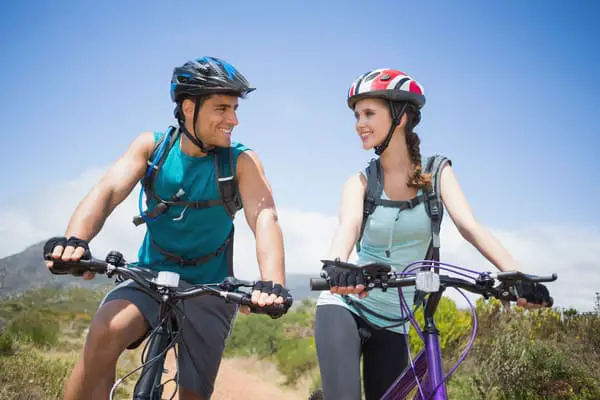
Over the top of your chamois, you’re going to need some mountain bike shorts or pants to keep you protected from the elements, and from crashes. Mountain bike shorts offer a couple of distinct advantages over other athletic and casual shorts. They have strategic stretch and cuts, added durability to stand up to crashes, longer fits to work with knee pads, and added features like vented panels or waterproof fabrics.
When choosing mountain bike shorts, think about where and what type of rides you’ll be doing, then you can match that to the right fit and features. For example, if you ride in a hot climate and don’t wear knee pads, you can look for a lighter weight short with a shorter inseam, and better venting. Meanwhile, if you ride with knee pads, looking for a longer inseam will help you minimize the gap between your pads.
Most mountain bikers ride in shorts the majority of the time, however, if you plan to ride a lot in colder weather, in the rain and mud, or you ride a lot of downhill, durable and sometimes padded mountain bike pants might be the right call.
Mountain bike pants have a slimmer cut at the ankles so they don’t catch on your bike, but also enough room for knee pads underneath, and many offer burly protection for gnarly downhill riding. Some mountain bike pants for cold weather riding even offer some insulation, too.
Depending on where you live and ride, you might want to have a pair of waterproof bike shorts or pants on your radar. Featuring water resistant DWR coatings, these pants and shorts will shed mud and water, keeping you dry and warm when the weather gets bad. These bottoms are less breathable than other shorts and likely won’t perform as well in warmer temperatures.
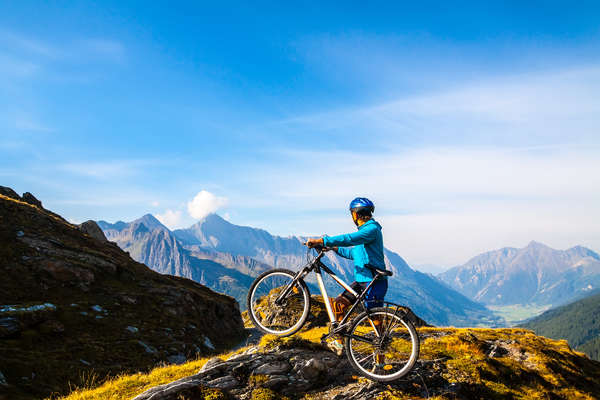
When choosing the right mountain bike clothing, picking the right top is probably less important than your bottoms, but there are a couple of points to remember. First, mountain biking is a good workout, you’re going to get sweaty! Wicking merino wool and synthetic materials are the go-to for most mountain bike jerseys to help you regulate your temperature.
Second, crashes happen, and clothing is protection. While a tank top may keep you cool on the climb, it doesn’t offer a lot of protection from the ground if you do fall. Balance your type of riding with your clothing choices for the best results.
As for jackets, unless it’s really cold, riding will keep you warm, so resist the temptation to layer up too warm – be bold, start cold! However, there are rides where a jacket is definitely necessary. We recommend waterproof jackets that have nice breathability and pit-zips to help you stay protected while regulating your temperature.
Mountain bike-specific jackets aren’t a necessity, but they have some nice touches like a longer tail to cover your backside while on the bike.
Not all riders like to wear gloves, but we recommend them to all riders, especially beginners. Gloves not only give you a better grip on your handlebars and brake levers, but they will also help you reduce hand and arm fatigue, letting you ride for longer. Mountain bike gloves also help keep you protected in falls and keep your digits warm.
Look for gloves that fit the shape of your hand well, with no bunching of extra material, so you can access your brake levers, shifter, and dropper post uninhibited, then match the warmth to your climate and where you ride.
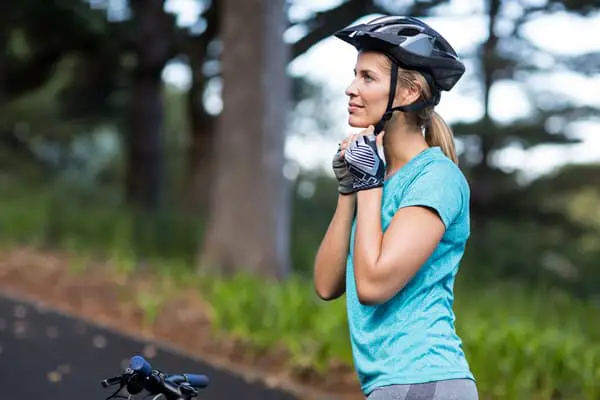
Best Rain Jacket For Mountain Biking
The best MTB jackets work harder than the road cycling equivalent. Mountain bikers produce a ton of heat and sweat that needs to be wicked away in order to stay dry, but riders don’t move fast enough on climbs for easy ventilation. It’s easy to get coated in mud and charge through wet bushes, making it hard for fabrics to function properly.
It’s also common to snag thorn bushes and slide along the ground far too often for a fragile fabric to survive. And yet, the best MTB jackets still need to keep you warm and dry no matter the weather.
Thankfully the latest crop of the best MTB jackets has addressed all of these challenges and more. Made from high-tech materials and featuring neat additions like hidden pockets and the ability to roll up and be stashed away, jackets have never been better.
The second iteration of the Endura MT500 II jacket isn’t just loaded with tons of useful features, it’s made from a killer cloth too. With its rubbery inner feel, we were concerned the ExoShell40DR fabric would feel clammy as soon as we started blowing hard, but the 40k WVT rating is no joke to be quite honest. It’s PFC-free and environmentally friendly too.
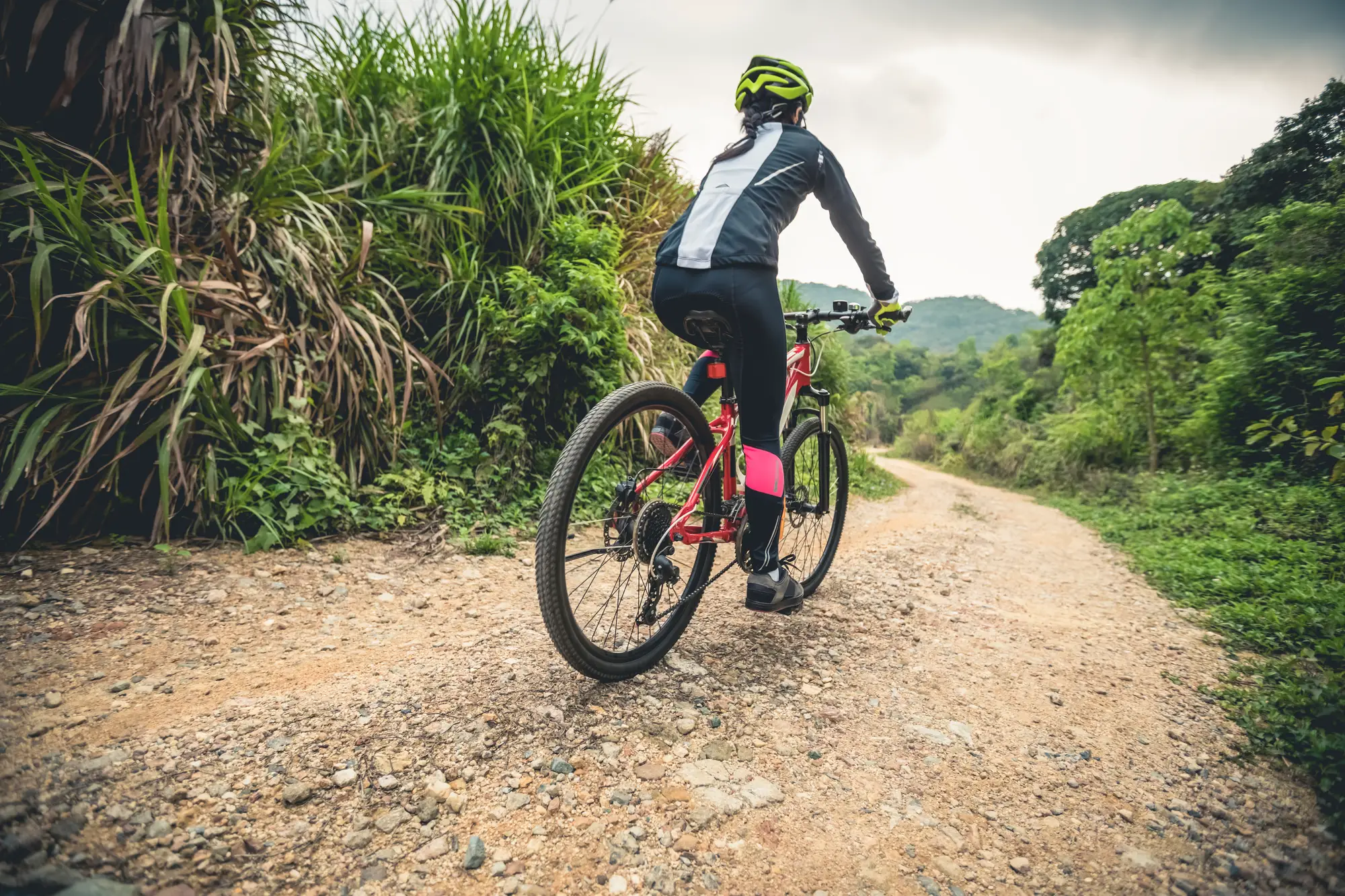
Exceptional breathability is backed up by super long side/underarm/upper arm vents with two-way zips and mesh-backed pockets that also work as vents. That gives more cooling flow through than any other jacket we’ve used which really helps control temperature and speed up drying on extended exertions.
The soft fabric doesn’t rustle or crinkle and stretch panels give a barely-there feel when you’re throwing the bike around. The sleeves are generous enough to stop arm pump or pull up for extra cooling, but still snug down cozily if things get draughty, and inside is a lycra storm cuff.
The hood stows neatly with a quick-release strap, but gives tall necked, peaked and draw corded protection under your helmet when you need it. The shoulders even get silicone grippers to keep bag straps in place and there’s a hidden inner pocket, a tethered glasses/goggles wiping cloth and a lift pass pocket on the left sleeve for park convenience.
Best Waterproof Jacket For Mountain Biking
Altura has been a favorite cost-effective brand for over 22 years and always scores for solid practical performance with an impressive feature list.
The Nightvision Hurricane sits at the top of the Night Vision range, which is actually designed for bike commuters. However, the waterproof nature of the jacket makes it great for MTB as well.
It starts with an iridescent reflective print detail and printed reflective panels so you are visible to others on the trail or on the road. The fully waterproof jacket features taped seams so that no water will enter the shell.
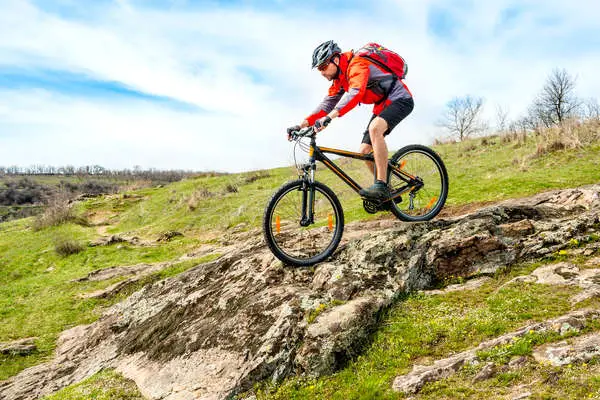
A removable hood and side wind flap also add additional coverage from the elements.
Ventilation is taken care of by the brand’s ‘in pocket’ airflow system, which is designed to keep riders cool when the pace picks up.
The jacket is designed to look good on and off the bike so this is a truly versatile shell. The Night Vision range also features jackets at other price points so you can find a jacket that works for your budget.
Best Winter Jacket For Mountain Biking
Riding in freezing temperatures may sound intimidating, but with the right gear, it’s possible to ride in almost any winter weather conditions. A winter cycling jacket is an important piece for any cyclist who’s hoping to spend more time on the bike in temperatures hovering around and below freezing.
Not only will a good winter cycling jacket keep you warm, it will allow you to wear fewer layers underneath, leaving you with more mobility in your upper body. While layering helps keep you warm, too many jerseys and base layers can end up wreaking havoc on your circulation to your hands.
So, if you love cold weather riding, it’s time to invest in a good winter cycling jacket.
Castelli Alpha Ros 2
Castelli has always been the brand to turn to for winter riding, from head to toe, and their jackets are no exception. On any winter group ride, you’re likely to see a Castelli coat making an appearance.
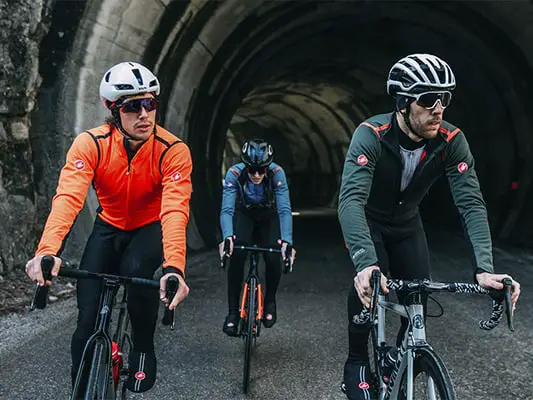
Like Rapha’s jacket, the Alpha Ros 2 uses Gore-Tex Infinium fabric to provide the best windproofing while also offering water resistance. We appreciate that unlike the other jackets that have two main back pockets, this one actually has three, making it more similar to a traditional jersey.
The double-layer cuff detail means your glove can seamlessly fit between the cuffs to avoid that awkward wind leak effect that can happen with some glove/jacket combos. And the silicone grip in the back ensures that you won’t be subjected to the annoying ‘ride up’ that can happen with some jackets.
It’s lightweight at 454 grams, and rated for rides between 23° and 50°F, though with more layers underneath, it can work in even colder temps. Available in both men’s and women’s sizes, this is a ‘roadie fit,’ so expect it to be more on the fitted side. If you want to layer underneath it, consider sizing up—but don’t worry, the fabric is quite stretchy.
Pants For Mountain Biking
Mountain biking has given way to fitted, light-weight, breathable pants that have all the mobility and performance of thermal Lycra tights, but offer the more robust performance of purpose built mountain bike apparel.
Mountain bike pants range from insulated to maintain your body temperature when riding in the cold, to water-resistant to shield you from rain and tire spray, to armored to protect you from cuts and scrapes when riding laps in the bike park. Good trail pants are warm yet breathable, and abrasion and weather-resistant (or even completely waterproof), without being heavy and stiff.

They have features like zippered pockets that can fit a phone and other goodies, adjustable waistbands that let you fine-tune fit, and ventilation to ensure you don’t overheat. Some are super packable, making them a good option to tuck into a pack for unpredictable weather.
And most have roomy enough to accommodate knee pads underneath and designed with leg zippers that make them easy to slip on and off over shoes. Generally, mountain bike pants don’t have a chamois, so you need to wear a pair of padded briefs underneath.
Best Jeans For Mountain Biking
While there’s nothing stopping you from riding in jeans, it’s probably not the best possible choice of fabric for long, technical, or challenging rides. If you’re just thinking about going for a quick cruise or taking a joy-ride then don’t let jeans stop you.
For starters, denim is made of 100% cotton. While cotton can be extremely comfortable for everyday wear, it’s not a great choice for performance fabrics. Cotton provides no moisture wicking, meaning that as you sweat it’s not going to pull the moisture away from your skin.
This is a huge concern in hot and humid climates such as those found in the American southeast.
For drier climates in states such as Arizona and Colorado, this may be less of a concern.
If the jeans do get wet, they’re also not going to dry on their own any time soon. This is especially important for cooler conditions where you don’t want to be both wet and cold. Cotton completely loses its insulative properties once wet.
As moisture builds up in the jeans, it can create more rubbing friction against the legs and hips that cause irritation. The irritation from the rubbing of wet cotton against the skin seems to affect some people more than others, but something to keep in mind.
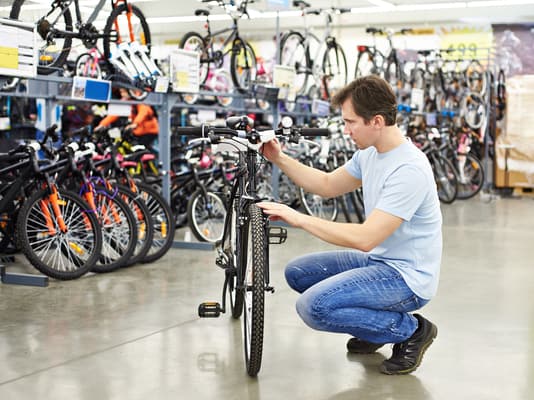
From a movement perspective, I find many pairs of jeans to be a bit restrictive. In particular, deep knee and hip flexion can be tricky depending on the flexibility of your particular pair. While you can certainly get away with wearing jeans in an upright riding position, it’s not likely that they’ll be comfortable for more aggressive forward-leaning postures or tough climbs.
If you’re still dead set on wearing jeans, make sure that they have a tapered cuff to prevent them from getting caught in the chain.
Traditionally jeans have been made of 100% cotton. While they looked great, at times they could be incredibly stiff and cause friction burns around the hips, knees, and low stomach. For this reason, many manufacturers have started to include elastane for extra stretch.
Elastane is a synthetic fiber known for its superb stretch.
Commercially it’s also known as Spandex or Lycra, which I’m pretty sure everyone has heard of these days. The elastane is incorporated into the jeans to account for 1% – 3% of total fabric and blended with the denim.
Best Padded Shorts For Mountain Biking
By choosing padded mountain bike shorts, you can save yourself a lot of discomfort. It is important to look out for men’s’ shorts specifically for mountain biking as these are cut to maximize comfort while out on the trail.
There are two basic types available:
- The tight-fitting Lycra shorts, like the Eco Daily Cycling Shorts below, are usually more popular with those who head off cross country or road racing.
- The baggier shorts are more popular with trail riders and often also have some waterproof properties to keep you comfortable during wet weather.
The only issue is that, once you start looking for the perfect pair of bike shorts, you’ll see that there are a lot of options out there.
One of the best to consider is Troy Lee Designs. These are a baggy design that features Velcro at the waist to allow you to adjust it up or down for the perfect fit. The waistband also features a silicone grip to prevent it from slipping. These are designed for maximum comfort during warmer weather.
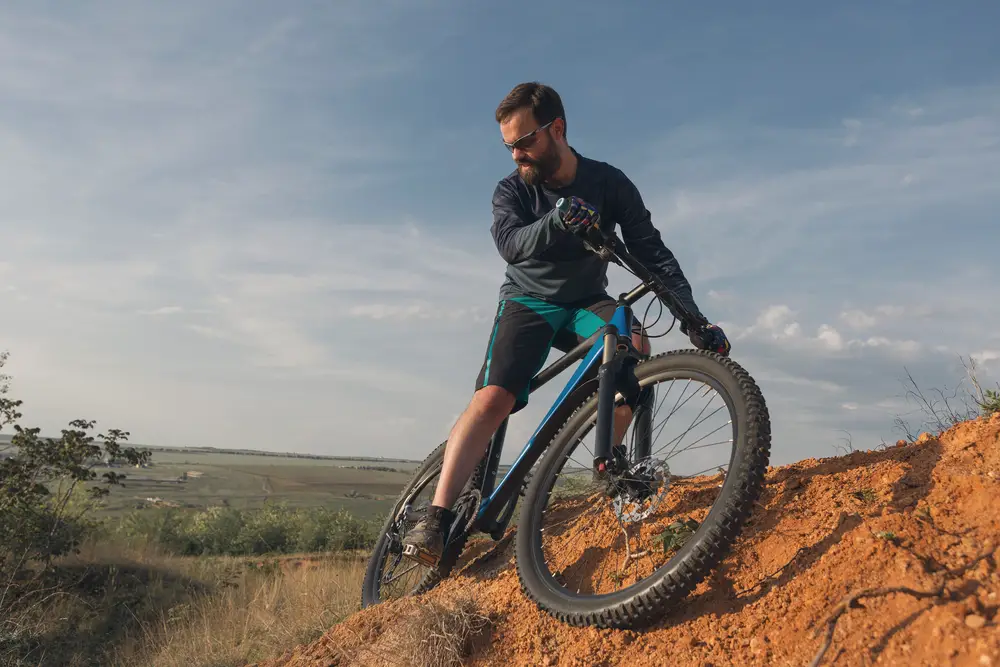
There are mesh panels on the legs to improve breathability. The Coolmax fabric is very breathable so the family jewels won’t get overheated even on a longer ride. The air mesh liner features a TMF pad made in Italy. The TMF pad provides valuable cushioning while the liner wicks away moisture.
You’ll feel cooler and drier wearing these.
The benefit of wearing baggy shorts is that you get zippered pockets to store your wallet, keys, etc. in.
Women’s Mountain Biking Underwear
For women, padded bike shorts aren’t just for giving you a little cushion while you sit on your bike seat all day. They provide far more important functions than that. Getting yourself a nice pair of bike shorts with well-made and high-quality chamois (or crotch-area padding) is extremely important if you want to do regular biking.
A good pair of bike underwear will prevent chafing, disperse road vibrations, and reduce the pressure your bike ride puts on pressure points in your legs and groin area. These are all important for comfort, efficiency, and long-term health as well.
Mostly everyone, whether you’re a biker or not, is familiar with chafing. Chafing is the uncomfortable rash and burning sensation that comes with sweaty legs rubbing together during physical activity. This is quite common in biking due to the high physical demands and the constant peddling.
Chafing is extremely uncomfortable and if left unchecked can make biking unbearable. This means if you plan on biking regularly or for long distances, preventing it should be one of your top priorities.
Nothing is better for preventing chafing than a good pair of bike shorts. The groin area padding, or chamois, will keep your thighs separated from one another in order to avoid chafing, allowing you longer, less painful, and more comfortable bike rides.
Even the smoothest roads aren’t perfect, and plenty of vibrations come from your bike’s rubber tires rolling over the road over periods of time. These vibrations can travel through the tires and through the frame of the bike, eventually reaching your body.

This can cause pain over the course of a long bike ride, and make the experience a lot less pleasant than it otherwise could be. This pain can also subsist awhile, making it so you have to wait longer between bike rides when you really just want to get out on the road again.
A high-quality pair of bike shorts with a good chamois can be an effective solution to road vibrations. Having padding to absorb the vibrations will significantly reduce the pain that slowly builds up over the course of your rides, even on the smoothest roads. This means that wearing a good pair of bike shorts will relieve pain and allow you to go on more frequent rides.
Sitting on the seat of your bike for a long time can be quite uncomfortable in a normal pair of shorts. However, the chamois is sewn into the bike shorts, relieving the pressure from important parts of your legs and butt, allowing blood to properly flow, and avoiding discomfort from the bike seat pushing into your legs’ pressure points.
A good pair of bike underwear isn’t complete without the ability to wick moisture away from your skin. Sweat can make any good bike ride very uncomfortable. A solid chamois should be made with a wick-away fabric that wicks sweat away from your body, giving you a dryer and more comfortable ride.
Women’s Mountain Biking Shorts
MTB is at its pinnacle of popularity. Thankfully, some brands have caught onto this growth and have been slowly making more intentional efforts to provide women’s-specific apparel. Where once there were only basic black baggy shorts, we now have options in any variety of colors and patterns. There are also shorts that fit women of all sizes and shapes, versus the one-style-fits-all approach of years past.
Though a disparity between the range of offerings for women vs men still remains, we hope that brands continue to recognize the importance of providing a variety of options that embrace the diversity within the cycling community.
Machines for Freedom is a female-founded and women-run company that has been a leader in the cycling industry in terms of representing and celebrating diversity through their choice of models and their paid ambassadorships. They’re best known for making cycling clothing that is inclusively sized, with kits available in sizes XS to XXXL.
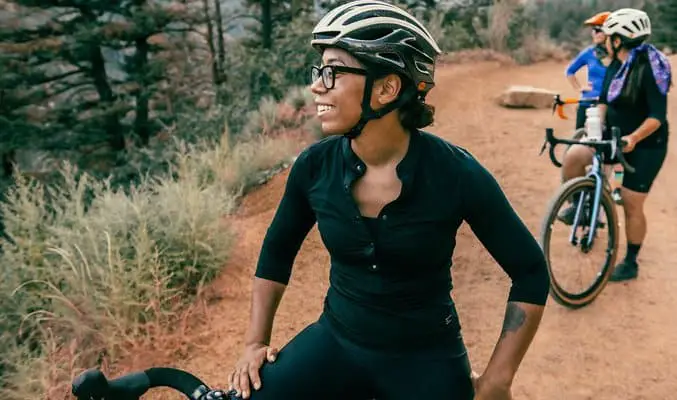
Machines for Freedom started off as a road cycling brand in 2014. The Key Short is the cornerstone of their collection. With this short, the Lycra-spandex look may be out, but the baggies most associated with mountain bike riding have not taken their place. Instead, the Key Short is a high-waisted, tailored short that I’d actually say looks classy. I opted for the 11” versus the 5.5” and they really have a classic Bermuda short vibe.
Throw on a button-down top, and take these shorts from the trail to a night on the town.
The Key Short doesn’t only look nice, it’s well constructed with attention to detail. Those finer details include a sliding lock-snap closure and button waist closure and MFF’s signature rear waistband zippered phone pocket.
There are also two front scooped pockets and two zippered back pockets. The 100-percent polyester fabric is a relatively heavy fabric, one thing that adds to its classic styling, but also adds to its durability. In general, the fabric stretches really well. At the waist and bottom hem, there seems to be slightly less stretch, which is understandable, due to seam construction.
There’s zero risk of exposing yourself, even in the most aggressive positions, and they provide a nice feeling of core/trunk support in general.
Men’s Mountain Biking Shorts
Just as the categories of mountain bikes themselves have become increasingly ambiguous, the same could be said about some of the clothes men wear on the trail. Whether it’s casual-looking shorts with bike-oriented features, options that blend the longer cuts of DH shorts with lighter, more XC-oriented fabrics, or any of the new and unique features we’re seeing, there are a lot of different shorts out there and it’s tough to figure out exactly where each excels.
Mountain biking includes many risks because of the unpredictable nature of the sport. You’ll never know what lies ahead even if you’ve already ridden the trail many times. There could be a new rut, some rock formations, or maybe an animal on the other side of the trail.
This is why it’s important to wear the right gear and have proper equipment when mountain biking. And one of the most important gears to have that many forget to consider is mountain bike shorts.
Mountain biking can get rowdy and very physical, which is why you need to wear the right clothing that will protect you upon impact and lower the chances of you getting scrapes or scratches if you happen to pass through some bushes.
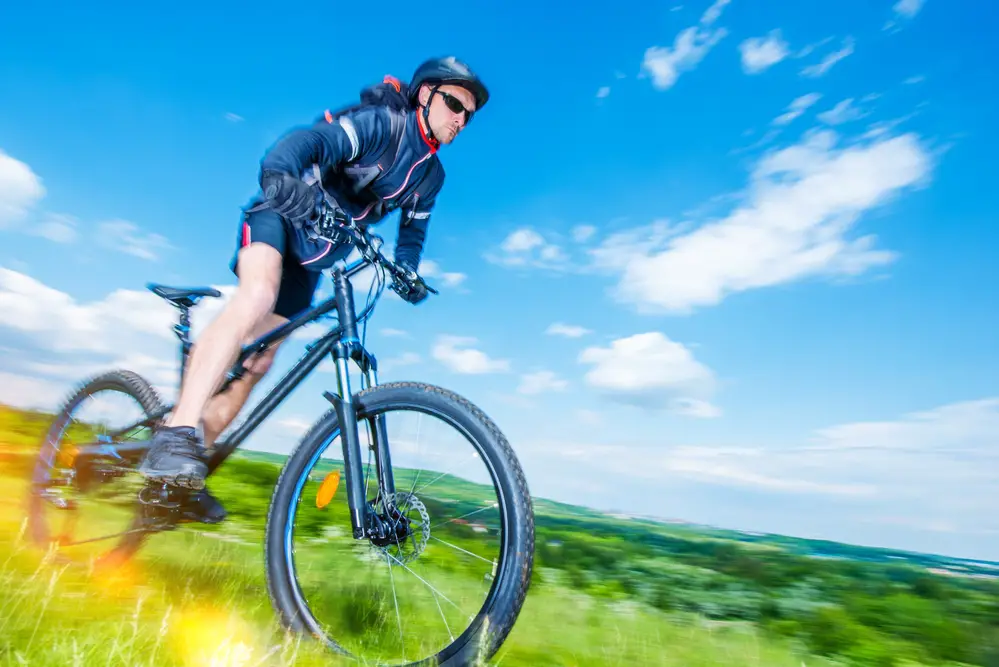
The 100% R Core X might be what you are looking for if you want something that can take a lot of beating at the trails, and at the same time, look stylish for casual wear. It provides the right flex and fit that lets you easily move on your bike without compromising protection.
It is made from a four-way stretch ripstop fabric that is built for durability and all-day comfort. Your sweat can easily dry out this way.
Its back portion is paired with Cordura material to fight against abrasion. It also has mesh ventilation that gives an airy comfort on long rides.
There’s even Coheasive’s adjustable shock cord technology that lowers the chances of any slips when you’re shredding downhills at high speeds. Plus, there’s a zippered cargo pocket for secure storage of an energy bar or other essentials made with accessibility in mind.
Best Jersey For Mountain Biking
Everyone knows sweat-wicking fabrics are good, but how fast a fabric dries after moving the moisture away from your skin is important too. Anything that stays soggy for too long will give you the chills once you start to cool down.
Antibacterial treatments are also a useful feature. Unfortunately, fabrics designed for excellence in transporting sweat can eventually start to smell. We’ve all been halfway into a ride and been overtaken by our own armpits – but it doesn’t have to be that way.
You might also want to think about the weight of the material. Heavier fabrics give more protection but can be warm in the summer months. Lightweight, more open mesh is lighter and cooler but less durable.
Some jerseys combine several fabrics to bring together the benefits of each – a regular solid knit through the body, for example, with mesh inserts under the arms or down the sides, and more durable panels on the shoulders and sleeves to protect against pack rub.
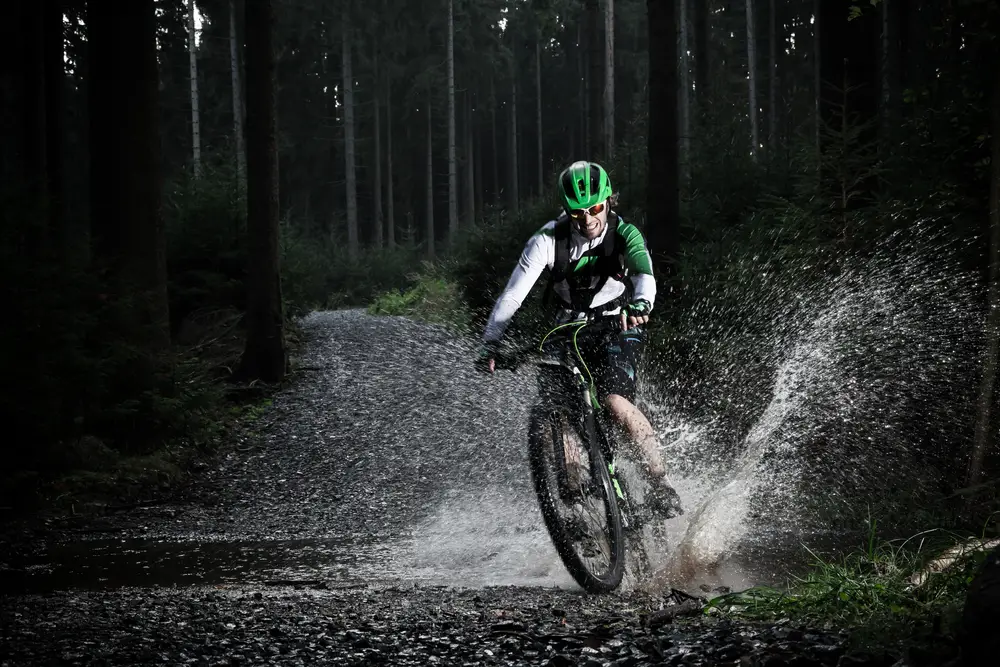
The cut may not seem as important on tops as on shorts because they tend to be more simply styled. But designs with shaped panels that follow the articulation of your arms and body tend to feel right as soon as you put them on and prove more comfortable on the bike too.
More basic styles often rely on stretchy fabric and a baggier cut to provide movement and more flexibility between sizes.
Once you’ve determined that the fit is right for you, get on a bike. Some jerseys feel terrible initially, but once you’re in the saddle they magically morph into the perfect shape and feel barely there.
Finally, always look at the seams. If you’re going to wear a pack then flatlock seams are your best bet to avoid irritation and chafing because there’s nothing to rub or dig in. Raglan sleeves are also good because they’re cut in one piece with the shoulder, so there aren’t any seams at the point of pressure.
Best Chamois For Mountain Biking
As you spend more and more time in the saddle, for many people it becomes clear that a good chamois with the right fit is virtually a necessity. And as an avid MTB rider, I would argue that it is the second most important clothing item you should invest in (after shoes, of course).
Chamois can serve a variety of uses, from quick, after-work rides to long days on the bike. For some, chamois are worn nearly every day, and for others, only when the day involves lots of mileage. Either way, they are a crucial part of the kit for most bikers.
As with most things dependent on fit, I would recommend trying on a few, as some work much better than others for different body types. Like a good ski boot, a chamois should be snug to prevent chafing, unwanted movement, etc., without feeling restrictive. When it comes to mountain bike chamois, some are lighter, more breathable, and fall more in the liner category, while those on the burlier, thicker end can be worn on their own, or under an outer shirt.
